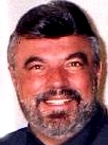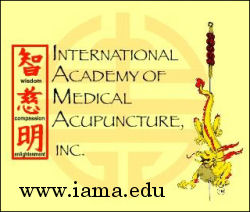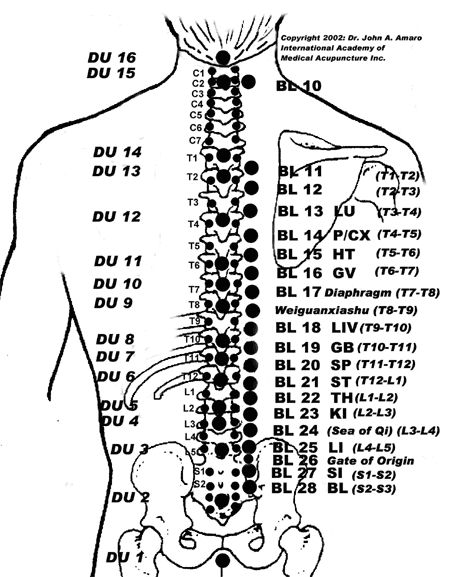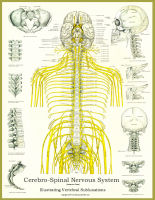Acupuncture & TCM Articles

Acupuncture Articles
by John A. Amaro L.Ac., Dipl.Ac.(NCCAOM), DC
 Dr. Amaro is an internationally known author, lecturer and practitioner beginning his practice of Acupuncture and Chiropractic in 1971. He has led 13 diplomatic Acupuncture study tours of The People's Republic of China escorting more than 500 doctors and practitioners. He has personally studied Acupuncture in nine separate Asian nations. Dr. Amaro is an internationally known author, lecturer and practitioner beginning his practice of Acupuncture and Chiropractic in 1971. He has led 13 diplomatic Acupuncture study tours of The People's Republic of China escorting more than 500 doctors and practitioners. He has personally studied Acupuncture in nine separate Asian nations.
He has received Certification in Acupuncture through the Columbia Institute of Chiropractic in 1973. This was one of the first Acupuncture postgraduate education programs for physicians in North America commencing in 1972.
He has been certified by the Waseda Acupuncture College in Tokyo, Japan in 1974 and graduated from the Chinese Medical Institute, Kowloon, China in 1976. He had previously taken postgraduate studies at the Tai Chung Medical School Taipei, China 1973.
The Spinal Subluxation and
its treatment by Acupuncture
John A. Amaro L.Ac., Dipl.Ac.(NCCAOM), DC

(For full size copy of this chart contact: DrAmaro@IAMA.edu )
The Chiropractic profession has been recognized through the medical and scientific community internationally as the undisputed authority in the diagnosis and treatment of the Vertebral Subluxation Complex. Unfortunately however over the last century, few health professions have explored the full merits of chiropractic. This has been the case until recently when it appears the medical professions have suddenly discovered the incredible merits of the corrected spinal subluxation and are now expressing considerable interest in its application. As more and more health professions have expressed an interest in coveting the Crown Jewels of the chiropractic profession namely the right to diagnosis and treat the subluxation complex, the profession at large appears to have found a new respect for what has been the cornerstone of its philosophy, art and science namely the Vertebral Subluxation.
There are probably few in the chiropractic profession who has more regard for the principle and practice of chiropractic as I have developed over my 35 years of practice. Even though most in the profession parallel me with the practice of acupuncture, I practice chiropractic and adjust the vast majority of my patients as a stand alone treatment or in addition to the administration of acupuncture.
Over chiropractic's 110 year history, there have been a variety of descriptions explaining the spinal subluxation as the profession has evolved. These have ranged from the simple “vertebrae being out of place’ to more contemporary findings of describing the “dysfunctional vertebral motor unit’ or “spinal fixation’. There are a variety of manipulative and therapeutic applications specifically designed for and known to correct the subluxation.
Without question one of the most significant approaches to reducing a vertebral subluxation is a very simple procedure which employs the principle of acupuncture. Please bear in mind, acupuncture in this application is simply a “principle, not a technique’ it does not require the insertion of a needle, but simple transcutaneous electric nerve stimulation, Gua Sha (stroking application) or a combination of red and green laser may be used with startling response. These techniques are available to any practitioner through physio therapy modalities.
Any time a meridian has been determined to be dysfunctional or out of balance through Electro Meridian Imaging (EMI), it will always have a direct effect on its corresponding spinal SHU or Associated points located two fingers breadth bilateral to the midline spinous process or Governing Vessel. Any imbalance of a meridian will in fact alter the dynamics of the tsang-fu or yin/yang organ function; it will likewise affect the musculo-skeletal system resulting in an aberration of motion and function affecting the specific vertebral level. Vertebral subluxations of this type are referred to as an energetic subluxation of the vertebrae, whereby spinal fixation is created due to the hypertonic paraspinal musculature on one side of the vertebrae and the hypotonic musculature on the opposite side.
Spinal Nerves and
Subluxations Poster

Once the DC determines which vertebrae are fixated through chiropractic evaluation, the practitioner by examining Fig. A will note that each vertebrae has two points one on either side of the spinous process 0.5 tsun or half the distance across the thumb. These points are classically known as the Huatuojiaji points. These two points are simply needled for 10-15 minutes with a heavier stimulation on the hypertonic side of the vertebrae and at the same time providing a lighter stimulation on the hypotonic side. In laser application it is advised to utilize the red 5mw 635nm laser on the hyper tonic side and utilize the 5mw 535mw Green laser on the opposite laminae.
Beginning at C2 and not picking up again until between T1-T2 and coursing down the spine to include the sacrum will be found a combination of points known as the Associated points which are two fingers breadth bilateral to the spinous all located on the Bladder meridian. The other important points known as the Governor Vessel ( Du Mo ) are a series of points between the individual vertebrae. It is these combination of acupuncture points which will have a dynamic effect on reducing an energetic subluxation complex when stimulated after evaluation of either a chiropractic vertebral problem or a meridian imbalance through Electro Meridian Imaging (EMI).
When one is utilizing non-invasive electronic stimulation it is a simple matter of treating both Huatuojiaji points of the involved vertebrae plus the Governing Vessel and Associated points if applicable. With Gua Sha, the practitioner utilizing a lubricant oil, will stroke the vertebral levels with the bifurcated portion of the instrument over the involved vertebrae striking the Huatuojiaji points in addition to the Governing Vessel and Associated (Shu) points.
Remember, the Associated points are only illustrated on the right side of the body in Fig. A. They are bilateral in application.
What you will learn by simply studying the chart provided here in Fig. A will no doubt alter the way you as a practitioner will approach and treat illness as it reflexes back to the spine producing one of the most significant findings in the body namely the Vertebral Subluxation.
Should you desire a full page copy of this extremely important chart in Fig A, please contact me with your request.
Best Wishes on your successful practice and the best to you in 2006 the Year of the Fire Dog.
| 